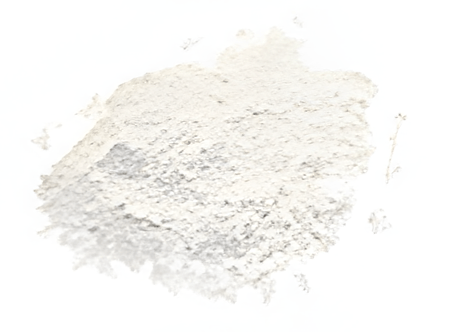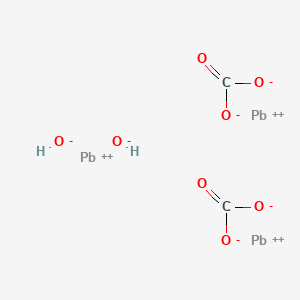SECTION 1. IDENTIFICATION
Product Name: Lead Carbonate, Basic
Product Number: All applicable American Elements product codes, e.g. PB2-CBB-02
, PB2-CBB-03
, PB2-CBB-04
, PB2-CBB-05
CAS #: 1319-46-6
Relevant identified uses of the substance: Scientific research and development
Supplier details:
American Elements
10884 Weyburn Ave.
Los Angeles, CA 90024
Tel: +1 310-208-0551
Fax: +1 310-208-0351
Emergency telephone number:
Domestic, North America: +1 800-424-9300
International: +1 703-527-3887
SECTION 2. HAZARDS IDENTIFICATION
Classification:
This chemical is considered hazardous by the 2012 OSHA Hazard Communication Standard (29 CFR 1910.1200)
Acute oral toxicity Category 4
Acute Inhalation Toxicity - Dusts and Mists Category 4
Carcinogenicity Category 1B
Reproductive Toxicity Category 1A
Specific target organ toxicity - (repeated exposure) Category 2
Signal Word: Danger
Hazard Statements:
Harmful if swallowed
Harmful if inhaled
May cause cancer
May damage the unborn child. Suspected of damaging fertility
May cause damage to organs through prolonged or repeated exposure


Precautionary Statements
Prevention:
Obtain special instructions before use
Do not handle until all safety precautions have been read and understood
Use personal protective equipment as required
Wash face, hands and any exposed skin thoroughly after handling
Do not eat, drink or smoke when using this product
Use only outdoors or in a well-ventilated area
Do not breathe dust/fume/gas/mist/vapors/spray
Response:
IF exposed or concerned: Get medical attention/advice
Inhalation:
IF INHALED: Remove victim to fresh air and keep at rest in a position comfortable for breathing
Ingestion:
IF SWALLOWED: Call a POISON CENTER or doctor/physician if you feel unwell
Rinse mouth
Storage:
Store locked up
Disposal:
Dispose of contents/container to an approved waste disposal plant
Hazards not otherwise classified (HNOC):
Very toxic to aquatic life with long lasting effects
SECTION 3. COMPOSITION/INFORMATION ON INGREDIENTS
Component : Lead carbonate hydroxide
CAS-No: 1319-46-6
Weight 100%
SECTION 4. FIRST AID MEASURES
Eye Contact:
Rinse immediately with plenty of water, also under the eyelids, for at least 15 minutes. Get medical attention.
Skin Contact:
Wash off immediately with soap and plenty of water while removing all contaminated clothes and shoes. Obtain medical attention.
Inhalation:
Remove from exposure, lie down. Move to fresh air. If not breathing, give artificial respiration. Immediate medical attention is required.
Ingestion:
Call a physician immediately. Clean mouth with water.
Most important symptoms and effects:
No information available.
Notes to Physician:
Treat symptomatically
SECTION 5. FIREFIGHTING MEASURES
Suitable Extinguishing Media:
Use extinguishing measures that are appropriate to local circumstances and the surrounding environment.
Unsuitable Extinguishing Media No information available
Flash Point No information available
Method - No information available
Autoignition Temperature
Explosion Limits
Upper No data available
Lower No data available
Sensitivity to Mechanical Impact No information available
Sensitivity to Static Discharge No information available
Specific Hazards Arising from the Chemical:
Non-combustible. Do not allow run-off from fire fighting to enter drains or water courses.
Hazardous Combustion Products:
lead oxides lead
Protective Equipment and Precautions for Firefighters:
As in any fire, wear self-contained breathing apparatus pressure-demand, MSHA/NIOSH (approved or equivalent) and full protective gear.
NFPA:
Health: 2
Flammability: 0
Instability: 0
Physical hazards
N/A
SECTION 6. ACCIDENTAL RELEASE MEASURES
Personal Precautions:
Ensure adequate ventilation. Use personal protective equipment.
Environmental Precautions:
Do not flush into surface water or sanitary sewer system. Do not allow material to contaminate ground water system. Prevent product from entering drains. Local authorities should be advised if significant spillages cannot be contained. Should not be released into the environment.
Methods for Containment and Clean Up:
Sweep up or vacuum up spillage and collect in suitable container for disposal.
SECTION 7. HANDLING AND STORAGE
Handling:
Do not breathe dust. Do not get in eyes, on skin, or on clothing. Use only in area provided with appropriate exhaust ventilation.
Storage:
Keep in a dry, cool and well-ventilated place. Keep container tightly closed.
SECTION 8. EXPOSURE CONTROLS/PERSONAL PROTECTION
Exposure Guidelines
Component: Lead carbonate hydroxide
ACGIH TLV: TWA: 0.05 mg/m3
OSHA PEL:
NIOSH IDLH: IDLH: 100 mg/m3 TWA: 0.050 mg/m3
Mexico OEL (TWA): TWA: 0.15 mg/m3
Engineering Measures: Ensure adequate ventilation, especially in confined areas.
Personal Protective Equipment
Eye/face Protection:
Wear appropriate protective eyeglasses or chemical safety goggles as described by OSHA's eye and face protection regulations in 29 CFR 1910.133 or European Standard EN166.
Skin and body protection:
Wear appropriate protective gloves and clothing to prevent skin exposure.
Respiratory Protection:
Follow the OSHA respirator regulations found in 29 CFR 1910.134 or European Standard EN 149. Use a NIOSH/MSHA or European Standard EN 149 approved respirator if exposure limits are exceeded or if irritation or other symptoms are experienced.
Hygiene Measures: Handle in accordance with good industrial hygiene and safety practice.
SECTION 9. PHYSICAL AND CHEMICAL PROPERTIES
Physical State Powder Solid
Appearance Off-white
Odor Odorless
Odor Threshold No information available
pH No information available
Melting Point/Range 400 °C / 752 °F
Boiling Point/Range No information available
Flash Point No information available
Evaporation Rate Not applicable
Flammability (solid,gas) No information available
Flammability or explosive limits
Upper No data available
Lower No data available
Vapor Pressure No information available
Vapor Density Not applicable
Specific Gravity No information available
Solubility No information available
Partition coefficient; n-octanol/water No data available
Autoignition Temperature
Decomposition Temperature No information available
Viscosity Not applicable
Molecular Formula C2H2O8Pb3
Molecular Weight 775.59
SECTION 10. STABILITY AND REACTIVITY
Reactive Hazard:
None known, based on information available
Stability:
Stable under normal conditions.
Conditions to Avoid:
Incompatible products.
Incompatible Materials:
Strong oxidizing agents, Strong acids, Fluorine
Hazardous Decomposition Products:
lead oxides, lead
Hazardous Polymerization:
Hazardous polymerization does not occur.
Hazardous Reactions:
None under normal processing.
SECTION 11. TOXICOLOGICAL INFORMATION
Acute Toxicity
Product Information
Component Information
Toxicologically Synergistic Products:
No information available
Delayed and immediate effects as well as chronic effects from short and long-term exposure
Irritation No information available
Sensitization No information available
Carcinogenicity:
Component: Lead carbonate hydroxide
CAS-No: 1319-46-6
IARC: Not listed
NTP: Reasonbly anticipated
ACGIH: A3
OSHA: Not listed
Mexico: Not listed
Mutagenic Effects: No information available
Reproductive Effects: No information available.
Developmental Effects: No information available.
Teratogenicity: No information available.
STOT - single exposure None known
STOT - repeated exposure None known
Aspiration hazard: No information available
Symptoms / effects,both acute and delayed: No information available
Endocrine Disruptor Information: No information available
Other Adverse Effects: The toxicological properties have not been fully investigated
SECTION 12. ECOLOGICAL INFORMATION
Ecotoxicity:
Very toxic to aquatic organisms, may cause long-term adverse effects in the aquatic environment. The product contains following substances which are hazardous for the environment. May cause long-term adverse effects in the environment. Do not allow material to contaminate ground water system.
Persistence and Degradability: Insoluble in water May persist
Bioaccumulation/ Accumulation: No information available.
Mobility: Is not likely mobile in the environment due its low water solubility
SECTION 13. DISPOSAL CONSIDERATIONS
Waste Disposal Methods:
Chemical waste generators must determine whether a discarded chemical is classified as a hazardous waste. Chemical waste generators must also consult local, regional, and national hazardous waste regulations to ensure complete and accurate classification.
SECTION 14. TRANSPORT INFORMATION
DOT
UN-No UN3288
Hazard Class 6.1
Packing Group III
TDG
UN-No UN3288
Hazard Class 6.1
Packing Group III
IATA
UN-No UN3288
Proper Shipping Name TOXIC SOLID, INORGANIC, N.O.S.* Hazard Class 6.1
Packing Group III
IMDG/IMO
UN-No UN3288
Proper Shipping Name TOXIC SOLID, INORGANIC, N.O.S. Hazard Class 6.1
Packing Group III
SECTION 15. REGULATORY INFORMATION
U.S. Federal Regulations:
TSCA 12(b) Not applicable
SARA 313
Component : Lead carbonate hydroxide
CAS-No: 1319-46-6
SARA 313 - Threshold Values 0.1%
CWA (Clean Water Act) Not applicable
Clean Air Act Not applicable
OSHA Occupational Safety and Health Administration
OSHA - United States Occupational Safety and Health Administration
Component : Lead carbonate hydroxide
Specifically regulated chemicals: 30 µg/m3 Action Level / 50 µg/m3 TWA
CERCLA Not applicable
U.S. Department of Transportation
Reportable Quantity (RQ): N
DOT Marine Pollutant N
DOT Severe Marine Pollutant N
U.S. Department of Homeland Security
This product does not contain any DHS chemicals.
Other International Regulations
Mexico - Grade No information available
California Proposition 65 This product contains the following proposition 65 chemicals
SECTION 16. OTHER INFORMATION
Safety Data Sheet according to Regulation (EC) No. 1907/2006 (REACH). The above information is believed to be correct but does not purport to be all inclusive and shall be used only as a guide. The information in this document is based on the present state of our knowledge and is applicable to the product with regard to appropriate safety precautions. It does not represent any guarantee of the properties of the product. American Elements shall not be held liable for any damage resulting from handling or from contact with the above product. See reverse side of invoice or packing slip for additional terms and conditions of sale. COPYRIGHT 1997-2022 AMERICAN ELEMENTS. LICENSED GRANTED TO MAKE UNLIMITED PAPER COPIES FOR INTERNAL USE ONLY.
 Lead Carbonate, Basic is a water insoluble Lead source that can easily be converted to other Lead compounds, such as the oxide by heating (calcination). Carbonate compounds also give off carbon dioxide when treated with dilute acids. Lead Carbonate, Basic is generally immediately available in most volumes. High purity, submicron and nanopowder forms may be considered. American Elements produces to many standard grades when applicable, including Mil Spec (military grade); ACS, Reagent and Technical Grade; Food, Agricultural and Pharmaceutical Grade; Optical Grade, USP and EP/BP (European Pharmacopoeia/British Pharmacopoeia) and follows applicable ASTM testing standards. Typical and custom packaging is available. Additional technical, research and safety (MSDS) information is available as is a Reference Calculator for converting relevant units of measurement.
Lead Carbonate, Basic is a water insoluble Lead source that can easily be converted to other Lead compounds, such as the oxide by heating (calcination). Carbonate compounds also give off carbon dioxide when treated with dilute acids. Lead Carbonate, Basic is generally immediately available in most volumes. High purity, submicron and nanopowder forms may be considered. American Elements produces to many standard grades when applicable, including Mil Spec (military grade); ACS, Reagent and Technical Grade; Food, Agricultural and Pharmaceutical Grade; Optical Grade, USP and EP/BP (European Pharmacopoeia/British Pharmacopoeia) and follows applicable ASTM testing standards. Typical and custom packaging is available. Additional technical, research and safety (MSDS) information is available as is a Reference Calculator for converting relevant units of measurement. See more Lead products.
See more Lead products. Lead is obtained mainly from galena (PbS) by a roasting process. Anglesite, cerussite, and minim are other common lead containing minerals. Lead does occur as a free element in nature, but it is rare. It is a dense, soft metal that is very resistant to corrosion and poorly conductive compared to other metals. Its density and low melting point make it useful in applications such as electrolysis and industrial materials.
Lead is obtained mainly from galena (PbS) by a roasting process. Anglesite, cerussite, and minim are other common lead containing minerals. Lead does occur as a free element in nature, but it is rare. It is a dense, soft metal that is very resistant to corrosion and poorly conductive compared to other metals. Its density and low melting point make it useful in applications such as electrolysis and industrial materials.
